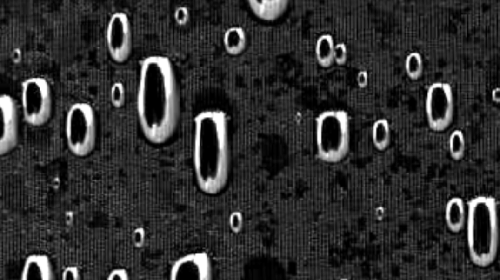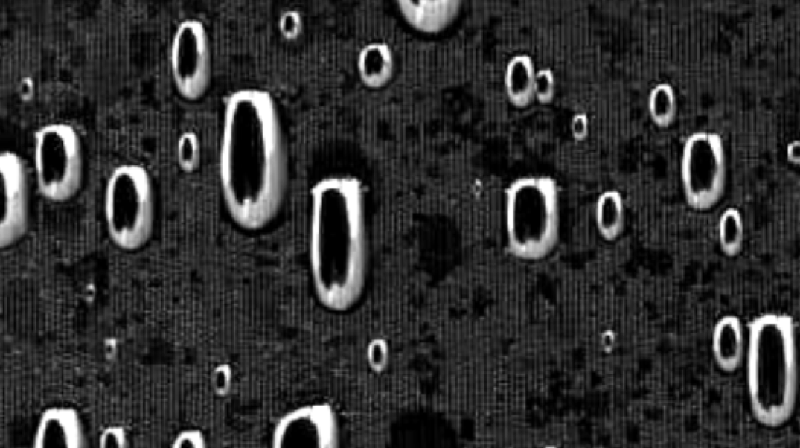Video—A Groovy Way to Harvest Dew
Collecting dew could provide people with clean, fresh water in areas where it is scarce. Under the right conditions, a one-meter-square surface can supply as much as half a liter of water per night. Researchers have tried to optimize dew collection by designing surfaces with special coatings or textures that make it easier for drops to roll down into a collection receptacle. In a new strategy, Pierre-Brice Bintein and colleagues of the Superior School of Industrial Physics and Chemistry (ESPCI) in Paris have fabricated surfaces with micrometer-wide grooves that help drops to grow faster and begin rolling sooner than they do on surfaces developed previously. The groove geometry is simple enough, say the authors, that it could be pressed into large, environmentally resilient sheets.
A passive dew collection system has a large surface that is slightly tilted so that dew drops above a certain critical size will trickle into a container before the morning sun drives the condensation away. Whereas previous surface engineering had the goal of lowering the critical drop size, Bintein and colleagues aimed to shorten the time until shedding starts by accelerating drop growth. For their textured surface design, they imprinted thin, square-edged grooves along the length of 10-centimeter-long silicon dioxide wafers using standard photolithography techniques. They placed a variety of grooved and smooth surfaces on a tilted stand inside a climatic chamber with controlled temperature and relative humidity.
The movies the team recorded reveal that the grooves allow a handful of drops to grow rapidly and then roll downwards. The team explains this behavior as the result of long-range coalescence: water can flow between distant drops that lie along the same groove, allowing one drop to steal water from its neighbors. The faster growth on the grooved surfaces meant that drops started shedding after about 30 minutes of condensation. By comparison, drops on smooth surfaces didn’t start shedding until 2 hours had passed.
This research is published in Physical Review Letters.
–Michael Schirber
Michael Schirber is a Corresponding Editor for Physics Magazine based in Lyon, France.





